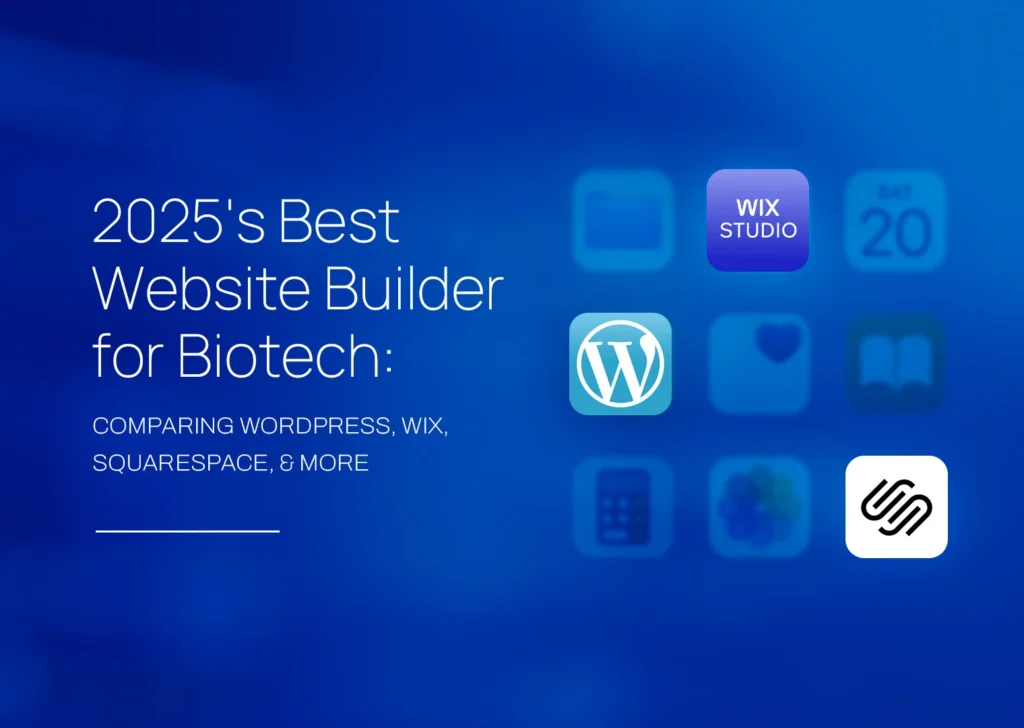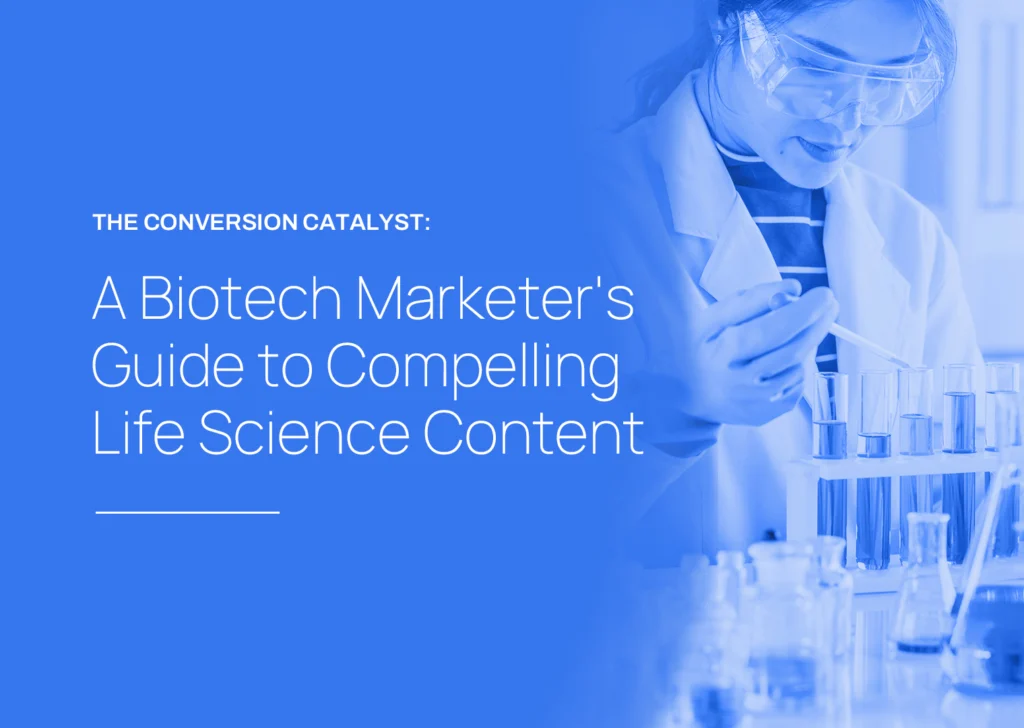Key Takeaways
- Understanding the fundamental differences between SEO and SEM
- How to balance organic and paid search strategies in life science marketing
- Strategic implementation tips for both approaches in B2B biotech contexts
The Digital Marketing Landscape in Life Sciences
In today’s digital age, visibility in search engine results can make or break your marketing success. You know you want to be seen, but should you focus on Search Engine Optimization (SEO), Search Engine Marketing (SEM), or both? Let’s dive into how these distinct yet complementary strategies can work for your life science organization to help you get ahead in a competitive market.
Understanding SEO and SEM
Search Engine Optimization (SEO) is the practice of optimizing your website and content to rank higher in organic search results. For life science companies, this means creating high-quality, technically accurate content that addresses specific scientific queries and challenges with thoughtful inclusion of relevant keywords that your target audience will be searching for.
Key components include:
- Technical optimization: Making your website faster, easier to crawl, and structured with search engines in mind can increase your ranking in organic search results.
- Content development: Creating compelling content that includes keywords and is relevant to user queries can make your website more likely to be seen.
- Link building: Utilizing hyperlinks within your content to lead to other relevant, credible sources can improve search engine visibility.
- User experience enhancement: Focusing on the overall user experience on your website and making relevant content easy to find and digest can improve your website’s ranking in search results.
Search Engine Marketing (SEM) encompasses paid search advertising, primarily through platforms like Google Ads. It allows you to place your message directly in front of your target audience when they search for specific keywords related to your products or services. SEM may also be referred to as pay-per-click (PPC) or simply as paid advertising.
Key elements include:
- Paid search campaigns: Paying search engines to display your ads higher on results pages can improve awareness and website traffic.
- Display advertising: Putting visually engaging ads on search networks can allow your content to be seen by users browsing relevant websites.
- Remarketing: Engaging with past website visitors can keep your brand top of mind for those who have shown interest previously.
- Analytics and tracking: When paying for advertising, it’s essential to keep an eye on the data so that you can determine what works and adjust accordingly.

Comparing SEO and SEM for Life Science Marketing
While both SEO and SEM aim to increase online visibility, their approaches to achieving digital marketing success diverge in fundamental and strategic ways. Here’s a quick comparison of the two approaches:
Time to Impact
- SEO: Typically takes several months to show significant results, but provides long-term, ongoing benefits
- SEM: Immediate visibility and results, but stops when you stop paying
Cost Structure
- SEO: Higher initial investment, lower long-term costs
- SEM: Ongoing costs based on click-through rates and competition
Control and Predictability
- SEO: Less control over results but more sustainable long-term
- SEM: High level of control and predictability in results
When to Use SEO in Life Science Marketing
SEO is particularly effective for:
- Building thought leadership
- Establishing scientific credibility
- Creating lasting organic visibility
- Targeting specific research areas or applications
- Supporting content marketing initiatives
Best Practices for Life Science SEO:
- Focus on technical accuracy and peer-reviewed sources
- Create detailed content addressing specific scientific queries
- Optimize for long-tail keywords relevant to your field
- Maintain regular content updates with new research and developments
When to Use SEM in Life Science Marketing
SEM works best for:
- Product launches
- Time-sensitive campaigns
- Specific geographic targeting
- Competitive keyword positioning
- Lead generation for new services
Best Practices for Life Science SEM:
- Leverage highly specific long-tail keywords
- Use industry-specific ad extensions and targeting
- Ensure than landing page content is compelling and aligns with ad messaging
- Comply with industry regulations and ethical marketing standards

Creating an Integrated Strategy
Most successful life science companies employ both SEO and SEM strategies, leveraging their complementary strengths.
A dual SEO and SEM marketing approach might include:
- Using SEM for immediate visibility while building SEO over time
- Targeting different stages of the buyer journey with each approach
- Sharing data between channels to optimize both strategies
- Adjusting allocation based on ROI analysis
By implementing both SEO and SEM, you can maximize your website visibility and reach, attract and maintain engagement from a relevant target audience, and quickly adapt to emerging trends within the dynamic market.
Measuring Success
Like all elements of a marketing strategy, reviewing the data is essential for mapping progress and understanding success. When it comes to SEO and SEM, there are a variety of KPIs to keep in mind.
Key metrics to track include:
- Organic search rankings
- Click-through rates
- Conversion rates
- Cost per acquisition
- Return on ad spend
- Time on website
- Bounce rates
Implementation Tips for Life Science Companies
There’s a lot to consider when it comes to implementing SEO and SEM to boost your digital marketing strategy. Don’t rush into things – start with a solid foundation and clear goals in mind so that you remember what you’re working toward and who you’re hoping to reach.
- Start with keyword research specific to your scientific niche: Google’s Keyword Planner or SEM Rush can provide insight on which keywords make sense to target with organic or paid content.
- Develop a content calendar incorporating both SEO and SEM goals: Identify a sustainable cadence that builds your content library, finds your audience, and keeps them engaged.
- Regular monitoring and adjustment of strategies: Plan to keep an eye on the data over time, and don’t be afraid to experiment to see what resonates.
- Focus on mobile optimization: With mobile devices accounting for a large share of internet traffic, make sure that your website functions well for those viewing your website from a smartphone or tablet.
- Maintain consistent messaging across both channels: Consistency is key for brand awareness and building trust and credibility with a clear, reliable image of your brand.
How Samba Scientific Can Help
Ready to optimize your life science company’s digital presence? Contact Samba Scientific’s digital marketing experts for a customized SEO and SEM strategy tailored to your specific needs. Let’s connect.



